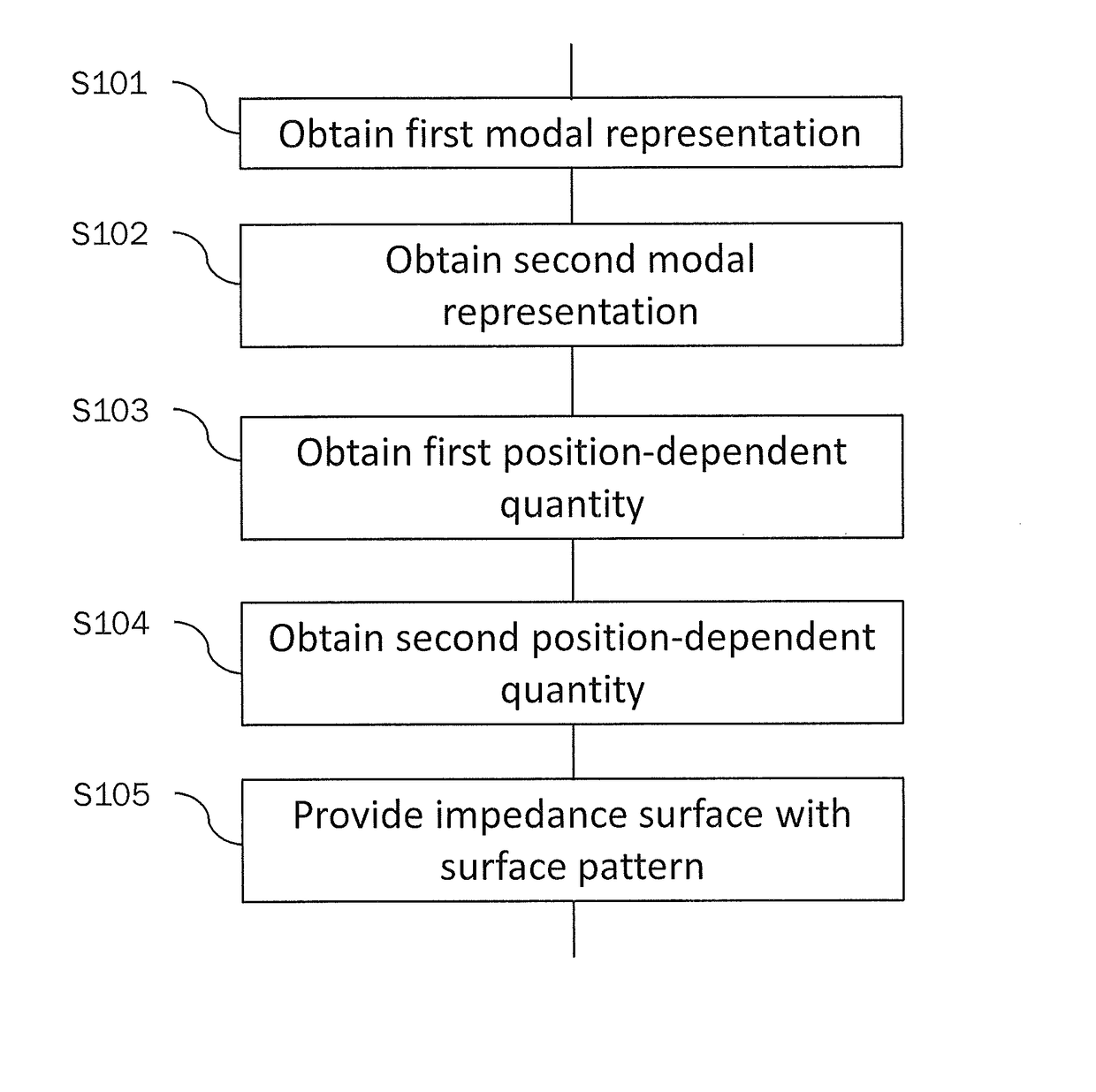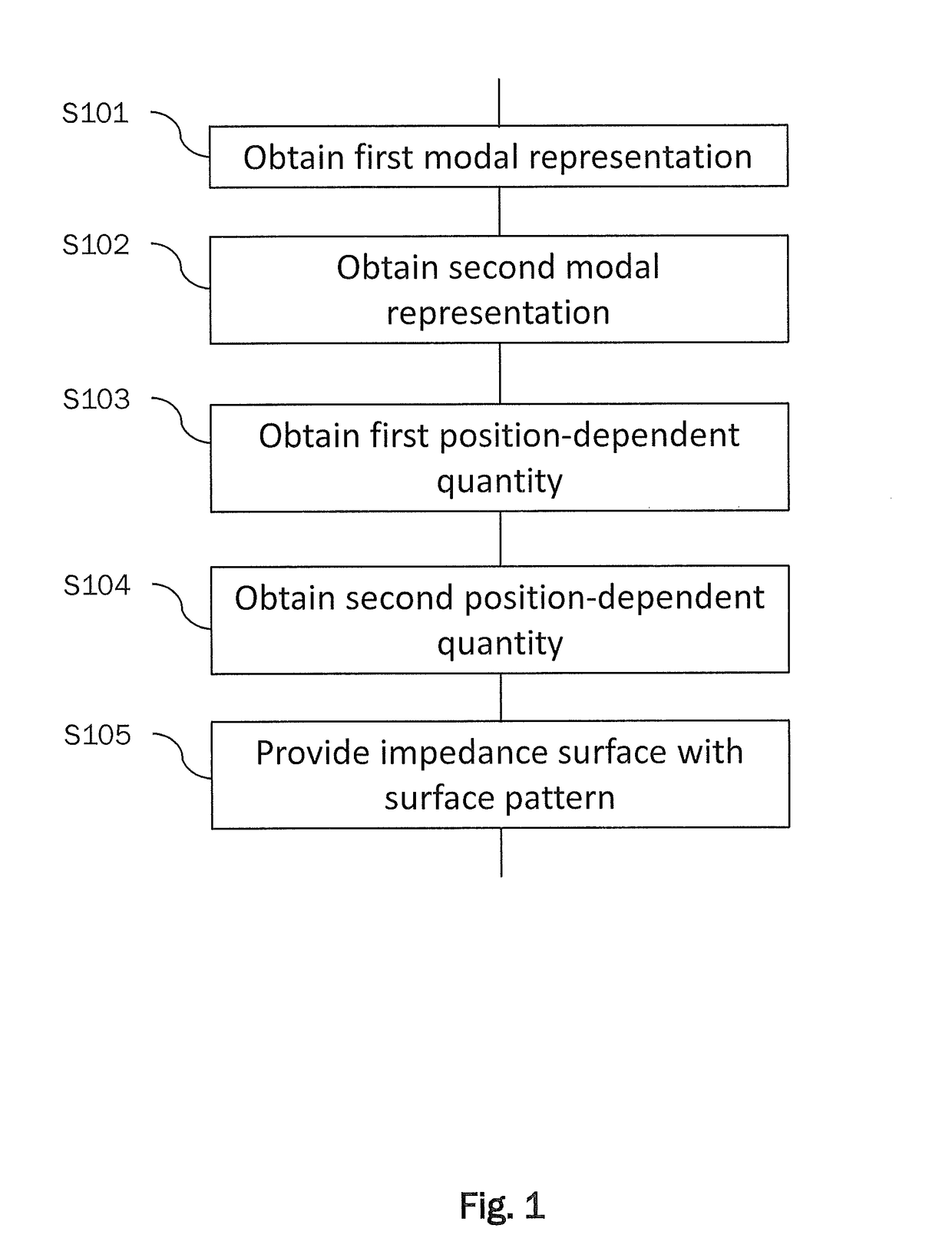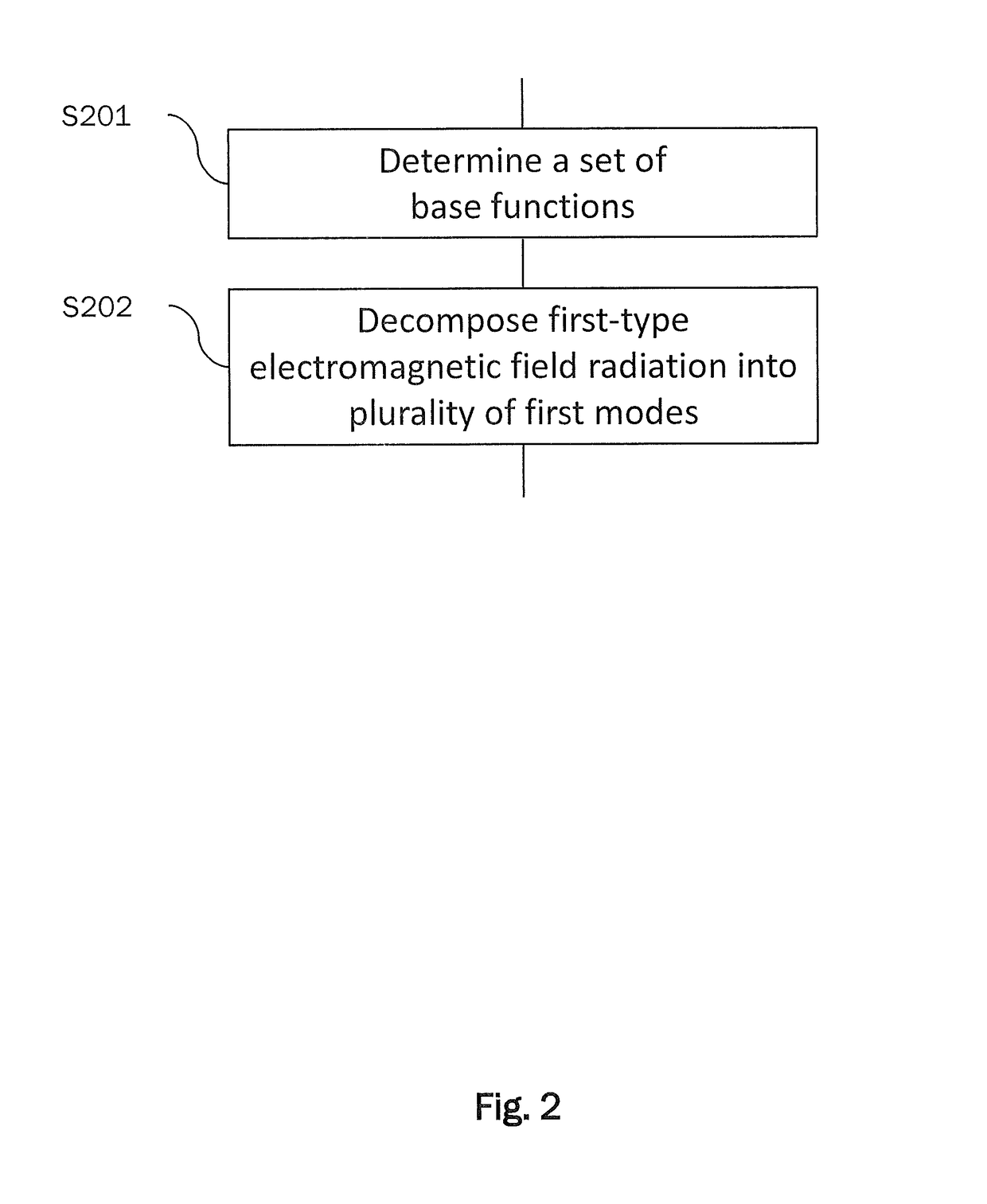Method for designing a modulated metasurface antenna structure
a modulated metasurface and antenna technology, applied in the direction of polarised antenna unit combinations, antennas, electrical devices, etc., can solve the problems of limited range of antenna configurations and performances that are achievable in the context of conventional antenna design, large bulky structure, complex and expensive manufacturing,
- Summary
- Abstract
- Description
- Claims
- Application Information
AI Technical Summary
Benefits of technology
Problems solved by technology
Method used
Image
Examples
Embodiment Construction
[0056]Preferred embodiments of the present application will be described in the following with reference to the accompanying figures, wherein in the figures, identical objects are indicated by identical reference numbers. It is understood that the present application shall not be limited to the described embodiments, and that the described features and aspects of the embodiments may be modified or combined to form further embodiments of the present application.
[0057]The present application relates to a conjugate-matched design procedure for obtaining artificial surface antennas with modulated scattering tensor (modulated impedance tensor).
[0058]In the context of the present application, modulated metasurface antennas are based on the use of a special type of scattering surfaces characterized by a modulation of their scattering tensor. The surface, which can be flat or curved or faceted, is illuminated by one or more feeding elements (either embedded or external). Several surfaces ca...
PUM
 Login to View More
Login to View More Abstract
Description
Claims
Application Information
 Login to View More
Login to View More - R&D
- Intellectual Property
- Life Sciences
- Materials
- Tech Scout
- Unparalleled Data Quality
- Higher Quality Content
- 60% Fewer Hallucinations
Browse by: Latest US Patents, China's latest patents, Technical Efficacy Thesaurus, Application Domain, Technology Topic, Popular Technical Reports.
© 2025 PatSnap. All rights reserved.Legal|Privacy policy|Modern Slavery Act Transparency Statement|Sitemap|About US| Contact US: help@patsnap.com



